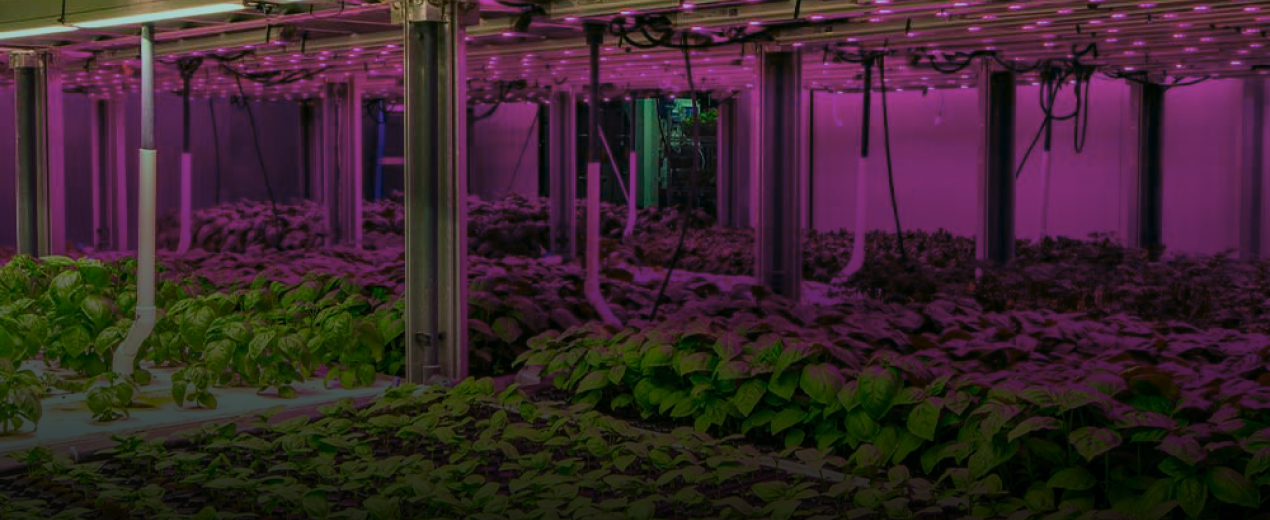
What is CEA?
Gain insights into Controlled Environment Agriculture (CEA) and how it revolutionizes the way
we grow food. Discover the benefits of CEA and its impact on the future of farming.

What is CEA?
Gain insights into Controlled Environment Agriculture (CEA) and how it revolutionizes the way
we grow food. Discover the benefits of CEA and its impact on the future of farming.
Did you know that you can grow virtually any plant in any part of the world, regardless of its native climate? Welcome to the fascinating world of Controlled Environment Agriculture (CEA), where innovative techniques allow us to replicate climates and grow plants in regions where they've never existed before. Join us as we dive into the science behind CEA and explore its revolutionary potential for agriculture worldwide.
Controlled Environment Agriculture (CEA) represents a pioneering agricultural approach where farmers create precise environmental conditions to mimic specific climates, enabling the cultivation of plants in any location, irrespective of natural conditions. Imagine it as digitally copying and pasting climate settings from one environment to another, but in real-world agriculture.
CEA leverages advanced technologies to regulate factors like temperature, humidity, light intensity, and nutrient concentrations within controlled settings such as greenhouses or indoor farms. This meticulous control ensures that crops receive optimal conditions for growth throughout their lifecycle, maximizing productivity and quality.
By adopting CEA, farmers can overcome traditional limitations posed by adverse climates and poor soil quality. This technology-driven method not only boosts agricultural output but also enhances resource efficiency by minimizing water usage and reducing dependency on chemical inputs. Ultimately, CEA stands at the forefront of sustainable farming practices, offering a pathway to secure food production in an increasingly unpredictable global climate.

Controlled Environment Agriculture (CEA) revolutionizes agricultural possibilities by providing farmers with unprecedented control over their growing environments. Whether envisioning tropical fruits flourishing in temperate regions or nurturing delicate herbs amidst desert landscapes, CEA empowers agricultural innovation on a global scale.
The key to CEA's success lies in its ability to fine-tune environmental variables critical to plant growth. Temperature regulation ensures plants thrive in climates otherwise unsuitable for traditional farming, while precise humidity and light management mimic ideal growing conditions year-round. This versatility allows farmers to cultivate a diverse range of crops with consistent quality and yield, transforming challenging environments into productive agricultural hubs.
Beyond enhancing productivity, CEA promotes sustainable agriculture by minimizing environmental impact. By reducing water consumption through efficient irrigation systems and optimizing nutrient delivery directly to plant roots, CEA exemplifies resource-efficient farming practices. Moreover, by mitigating the need for chemical pesticides and herbicides, CEA supports ecosystem health and biodiversity, making it a cornerstone of modern agricultural sustainability.
The advantages of Controlled Environment Agriculture (CEA) extend far beyond the ability to grow crops in unconventional settings. By harnessing advanced technologies and scientific principles, CEA offers significant benefits to farmers, consumers, and the environment alike.
Increased Yields and Quality: CEA enables farmers to achieve higher yields and superior crop quality compared to traditional farming methods. By optimizing growing conditions such as light intensity, nutrient levels, and temperature, farmers can consistently produce crops that meet stringent market demands for freshness and taste.
Reduced Environmental Impact: CEA promotes environmental stewardship by minimizing water usage and reducing reliance on chemical inputs. Closed-loop irrigation systems and precise nutrient management contribute to water conservation, while integrated pest management strategies help minimize pesticide use, safeguarding soil health and biodiversity.
Year-Round Production: One of the standout features of CEA is its capability for year-round crop production. By maintaining stable growing conditions regardless of external weather patterns, farmers can ensure a steady and reliable supply of fresh produce to meet consumer demand throughout the year.
Flexibility and Scalability: CEA offers unparalleled flexibility in crop selection and production scale. Farmers can tailor their operations to suit market trends and consumer preferences, while the scalability of CEA systems allows for expansion or adaptation to varying operational needs over time.